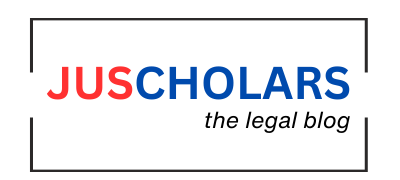Introduction
Every country has its own way of protecting investors, but what happens when investors forget about their own money? Unclaimed dividends, profits that never reach shareholders, reveal an interesting story about how different legal systems treat dormant wealth.In India, these forgotten funds are channelled into the Investor Education and Protection Fund (IEPF) under the Companies Act, 2013, designed to safeguard investor interests and promote financial literacy. In contrast, the United States and the United Kingdomfollow distinct paths: one relies on state-level custodianship, while the other entrusts companies themselves to manage dormant dividends.
Each approach reflects a different philosophy. India’s regulatory guardianship, America’s consumer-oriented custodianship, and Britain’s corporate stewardship, together, they expose a common challenge: how to strike the right balance between protecting investors and ensuring that unclaimed money continues to serve a productive purpose.This blog explores how these three systems operate, what makes them effective or maybe ineffective, and what lessons India can draw to make its investor protection framework more accessible, transparent, and responsive.
Comparative Analysis
India
The Companies Act of 2013[1] and the Investor Education and Protection Fund Authority (Accounting, Audit, Transfer and Refund) Rules of 2016[2] set the rules for unclaimed dividends and shares in India. The law says that a company must move any unpaid dividends to a special bank account within thirty days of the date they were declared. If these dividends are not claimed or paid for seven years in a row, the money and any shares that go with it must be sent to the Investor Education and Protection Fund (IEPF).[3] The Ministry of Corporate Affairs set up the IEPF Authority to be the main organization in charge of both protecting investors’ interests and encouraging financial literacy.[4]
Shareholders who want to get back unclaimed dividends or shares must fill out an online application (e-Form IEPF-5) with the IEPF Authority and send the necessary documents to the Nodal Officer of the company in question for verification at the same time. The IEPF Authority gives the final approval for a refund or transfer after confirmation. The shares that were given to the IEPF are kept in dematerialized form, which makes them easy to manage and clear.[5]
United States
In the United States, state-level unclaimed property laws, also known as escheatment laws, mostly decide what happens to unclaimed dividends and shares.[6] There is no single federal law that covers this area, which means that rules and procedures can be very different from state to state. After a certain amount of time, usually 3 to 5 years, assets are considered dormant, depending on the laws of the state in question. After this dormancy period is over, the state government takes over as custodian of the unclaimed funds or shares. These funds may eventually become part of the state’s general fund, but the people who own them can always get them back by filing a claim with the state’s unclaimed property division.[7] One can start these kinds of claims on official websites like MissingMoney.com, which bring together state databases to make them easier to find.[8]
Shares that aren’t claimed are usually given to the state, where they can be sold and turned into cash. The shareholder can only get back the cash value of the liquidated shares; they do not have any rights to any gains or increases in value that happen after the liquidation. The American system is based on the idea of protecting consumers and giving them back what they lost. It stresses that the state should be a neutral custodian, not a beneficiary.
United Kingdom
The Companies Act 2006[9] is the primary law in the UK that governs how unclaimed dividends and shares are handled. Each company’s Articles of Association also spell out the specific steps that need to be taken. Companies can usually keep unclaimed dividends for up to 12 years. After that, the claims are no longer valid. But a lot of companies choose a shorter limitation period, usually 6 years, as stated in their Articles of Association.[10] After the time limit has passed, the company can legally take back and use the unclaimed funds however it sees fit.
Unclaimed shares are different from dividends, they stay on the company’s balance sheet as a permanent liability. Shareholders must claim their dividends within the time limit set by the company. If they don’t, they lose their right to get their money back.[11] In the UK, companies usually don’t sell unclaimed shares because doing so could mess up shareholder equity and recordkeeping. So, the rules focus on letting companies run their own businesses and managing their money well. They stress that companies must keep accurate records and give shareholders reasonable chances to claim what they are owed.
Summarised Comparative Table
| FEATURE | INDIA | UNITED STATES | UNITED KINGDOM |
| Governing Law | Companies Act, 2013 and the Investor Education and Protection Fund Authority (Accounting, Audit, Transfer and Refund) Rules, 2016 | State-level unclaimed property laws (escheatment laws) | Companies Act, 2006 |
| Dormancy Period for Transfer | The unpaid dividend amount is transferred to a special bank account after 30 days. The amount and any related shares are then transferred to the IEPF after 7 years of remaining unclaimed. | Usually 3–5 years (period varies by state) | A company can hold unclaimed dividends for 12 years. However, a company’s Articles of Association can specify a shorter period, usually 6 years, after which the claim is time-barred and the company can reclaim the funds. |
| Recipient of Unclaimed Funds | The amount is transferred to the Investor Education and Protection Fund (IEPF). | Funds are transferred to the state government, which acts as custodian. | After the claim period, the unclaimed amount can be reclaimed by the company itself, which can then use the funds as it sees fit. |
| Claim Process | The claimant must file an online application (e-Form IEPF-5) with the IEPF Authority. They also need to send physical documents to the company’s appointed officer for verification. | The rightful owner must file a claim directly with the relevant state’s unclaimed property division. | Shareholders must claim the dividends from the company within the prescribed time limit. After that period, the claim is lost. |
| Treatment of Shares | If dividends on shares remain unclaimed for seven consecutive years, the shares themselves are transferred to the IEPF Authority. | Unclaimed shares are typically escheated to the state along with the cash value, where they may be liquidated. | Unlike dividends, unclaimed shares remain a permanent liability on the company’s balance sheet. |
| Liquidation of Shares | The shares are held in a dematerialized account by the IEPF Authority, which is managed to the benefit of investors. The original owner can reclaim the shares and associated benefits. | Escheated shares are often liquidated by the state, which holds the cash value. The shareholder can only claim the cash value, but not the gains. | Unclaimed shares are held as a liability and cannot be reclaimed by the company. |
[1] Companies Act 2013.
[2] Investor Education and Protection Fund Authority (Accounting, Audit, Transfer and Refund) Rules 2016.
[3] Indian Institute of Corporate Affairs, Policy Paper: Review of 7 Years Rule on Remittance to Investor Education and Protection Fund (IICA 2019) https://iica.nic.in/images/Policy_Paper_Review_7_Years_Rule_on_remittance.pdf accessed 5 October 2025.
[4] Infosys BPM, ‘Unclaimed Dividend and Shares’ (Infosys BPM) https://www.infosysbpm.com/about/corporate-governance/unclaimed-dividend-and-shares.html accessed 5 October 2025.
[5] TaxGuru, ‘Overview of Investor Education and Protection Fund (IEPF)’ (TaxGuru, 2 September 2021) https://taxguru.in/company-law/overview-investor-education-protection-fund-iepf.html accessed 5 October 2025.
[6] US Securities and Exchange Commission, ‘Investor Bulletin: Escheatment Process’ (Investor.gov, 25 February 2014) https://www.investor.gov/introduction-investing/general-resources/news-alerts/alerts-bulletins/investor-bulletins/investor-bulletin-escheatment-process accessed 5 October 2025.
[7] Investopedia, ‘How Can You Reclaim Escheated or Unclaimed Property?’ (Investopedia, 15 November 2015) https://www.investopedia.com/ask/answers/111115/how-can-you-reclaim-escheated-or-unclaimed-property.asp accessed 5 October 2025.
[8] Wikipedia, ‘MissingMoney.com’ (Wikipedia, 1 October 2025) https://en.wikipedia.org/wiki/MissingMoney.com accessed 5 October 2025.
[9]UK Companies Act 2006.
[10] Klea Legal, ‘Dividend Distribution in UK Companies: Getting It Right the First Time’ (Klea Legal, 18 July 2025) https://klealegal.com/corporate-governance/dividend-distribution-uk-companies accessed 5 October 2025.
[11] Mercian Accountants, ‘The Dividend Payment Process: A Guide’ (Mercian Accountants) https://www.mercianaccountants.co.uk/dividend-payment-guide/ accessed 5 October 2025.
Author Name- Ms. Somya Chawla is a 3rd year B.Com., LL.B. (Hons.) student at the Institute of Law, Nirma University in Ahmedabad, Gujarat.






